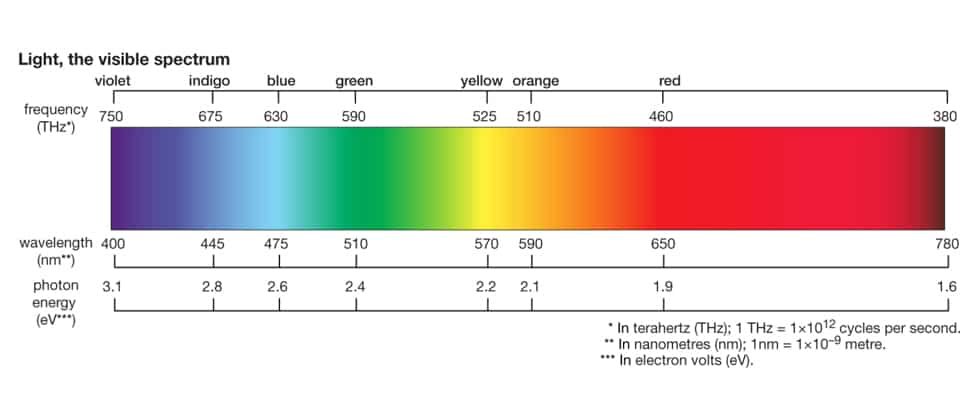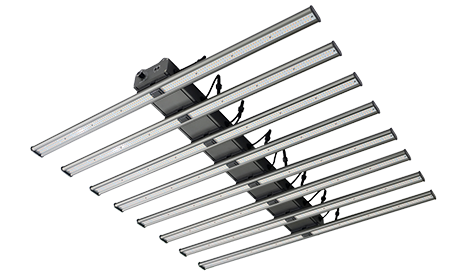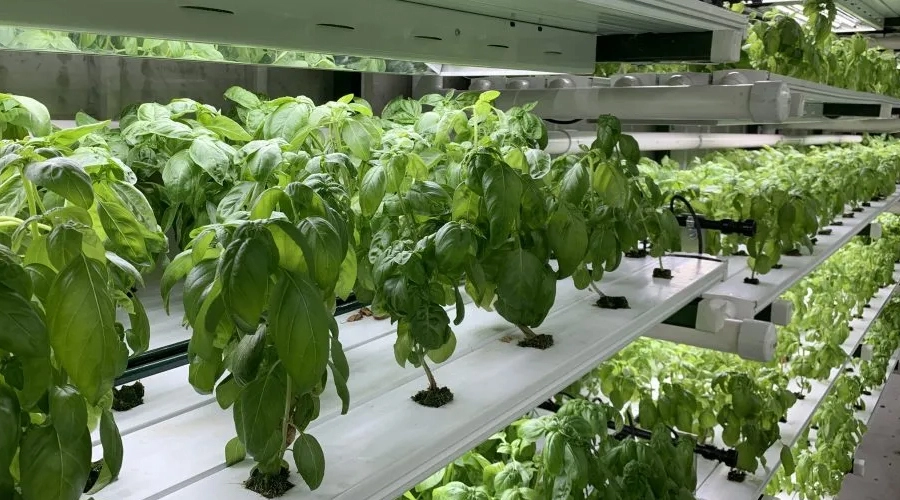İçindekiler
Hepimiz ışığın bitki büyümesi için kritik olduğunu biliyoruz. Belki de bu sadece tek taraflı gerçek bir anlayıştır, tıpkı bazı acemi yetiştiricilerin bitkilerinin neden belirli bir renkli ışığa ihtiyaç duyduğunu anlayamamaları gibi. İç mekanda meyve, sebze ve diğer bitkileri yetiştirmeye başladığınızda kesinlikle Daha iyi büyümelerine yardımcı olmak için iç mekan LED yetiştirme ışıkları kullanın ilave olarak.
Bu yazımızda bitkilerin ışık için ihtiyaç duyduğu ışık renklerini daha detaylı incelemeye çalışacağız. Böylece mavi ve kırmızı dalga boylarının az miktarda yeşil, sarı ve kızılötesi dalga boylarıyla birleşiminin neden fotosenteze yardımcı olduğunu anlayabilirsiniz. Bu, bir sonraki adımda iç mekanda yabani ot yetiştirme ışığını seçerken bilinçli bir seçim yapabilmenize yardımcı olur.

Bitkiler Neden Işığa Doğru Büyür?
Kaplumbağa sırtınızın yeni yapraklarının pencereden dışarı yayıldığını veya belirli bir bitkinin yerleştirildiğinde iç mekanda büyüyor gibi göründüğünü fark ettiniz mi? Bitkiler, yaprakları aracılığıyla en fazla güneş ışığını yakalamak için çeşitli stratejiler geliştirmişlerdir.
Çünkü bitkilerin fotosentez yapabilmesi için ışığa ihtiyacı vardır. Eğer o anda ihtiyaç duydukları ışığa erişimleri yoksa doğal olarak ona yaklaşmaya çalışacaklardır. Işığa tepki olarak büyüme yeteneğine fototropizm denir.
Bir tohum filizlenip kendini çok az ışıklı bir yerde bulursa veya halihazırda büyümekte olan bir bitki ihtiyaç duyduğu ışık miktarının aniden azaldığını fark ederse, bitki çeşitli şekillerde tepki verecektir:
- Yaprakların yeterince ışık alacağı bir yer bulmayı umarak gövde, yaprak çıkarmadan daha uzun süre büyür.
- Bitki, işlevsel fotosentez oluşturmak için gereken enerji çıkışını haklı çıkaracak bir nokta bulana kadar enerji tasarrufu sağlamak amacıyla yaprakları yeşil yapan malzemeyi çekerken mevcut yapraklar sararır.
- Yeni yapraklar filizleniyorsa küçük ve şekilsizdir çünkü düzgün gelişmek için yeterli malzeme ve enerjiye sahip değildirler.

Sadece bitki dünyası ile sınırlı olmayıp bazı mantar ve bakteriler de bu davranışı sergilerler. İçinde ne var “ışık”? Bitkilerin büyümesine ne faydası var?
Farklı Renkler Çeşitli Şeyler Yapar
Bitkilerin fotosentez için kullandıkları ışığa ne ad verilir? fotosentetik olarak aktif radyasyon ve görebildiğimiz şifalı bitkiler için iç mekan yetiştirme ışıkları ile aynı spektrumdadır. Farklı renklerin gerçekleştirmesi gereken kendi görevleri vardır. Aynı şekilde bitkiler de farklı amaçlar için farklı renkteki ışığı kullanırlar.
- Tohum ekerken ve ilk kez çimlenirken mavi ışık kullanılmalıdır. Bunun nedeni mavi ışığın klorofil oluşum miktarını artırabilmesidir.
- Bitkiler olgunlaşıp çiçek açmaya başladığında, daha fazla yaprak üretmelerine ve daha iyi mahsul almalarına yardımcı olan kırmızı ve mavi ışık önemlidir.
- Mor ışığın yaydığı yüksek enerji bitkilerin, meyvelerin ve sebzelerin renginin artmasına yardımcı olur.

PuÇok Işık (380-430nm): Spektrumdaki diğer renklerle karşılaştırıldığında menekşe en kısa dalga boyuna ancak nispeten yüksek enerjiye sahiptir.
Mavi Işık (430-500nm): Bitki gelişimi için en kritik ışık renklerinden biridir.
Yeşil Işık (500-565nm): Kalın üst kanopiye nüfuz eder ve alt kanopinin yapraklarını destekler.
Sarı Işık(565-580nm): Sarı, spektrumda en görünür renktir ancak doğal olarak bitkilerin en az kullandığı açık renktir.
Turuncu Işık (580-625nm): Sarı gibi turuncu da spektrumda en görünür renktir ve bitki gelişimine katkısı yoktur.
Kırmızı Işık(625-740nm): Mavi gibi bitkiler de fotosenteze yardımcı olmak için kırmızıyı emer.
Uzak Kırmızı (740-1050nm): Uzak kızılötesi veya kızılötesi (IR), görünür ışık spektrumundaki en uzun dalga boyundur.
UV Işık: UV radyasyonunun yüksek enerjisi bitkileri yakabilir. Ancak kenevir yetiştirmenin bazı faydaları vardır.
Peki bitkilerimizin daha hızlı ve sağlıklı büyümesi için sağladığımız ışık miktarını ayarlayabilir veya artırabilir miyiz?
BuCevabım evet ve tam da bu yüzden bitki yetiştirme ışıkları kapalı mekanda var olmak.
Eğer bilmek istiyorsan bitkiler güneş ışığında mı yoksa yapay ışıkta mı daha iyi büyür?, bununla ilgili tam bir makale hazırlıyoruz.
En İyi Renkli Işık Hedeflerinize Bağlıdır
Tüm bitkiler, fideden yetişkinliğe, çiçeklenme ve meyve vermeye kadar büyüme döngüleri için farklı bir renk spektrumu kullanır.
Bu nedenle ideal iç mekan LED yetiştirme ışıkları her büyüme aşaması için farklılık gösterir. Optimum renk spektrumu aynı zamanda yetiştirmek istediğiniz bitkinin türüne de bağlıdır.
Bu çok karmaşık bir hal alabilir ve gerçekte yalnızca sonuçları en üst düzeye çıkarmak isteyen ticari yetiştiriciler için önemlidir. Genel olarak bitkiler ışığın tüm dalga boylarında en iyi performansı gösterir. Ancak eşit miktarda ışığa ihtiyaçları yoktur ve ışığın tamamını absorbe etmeleri de gerekmez.
Mor Işık Bitkilere Ne Yapar?
Tüm bitkiler, fideden yetişkinliğe, çiçeklenme ve meyve vermeye kadar büyüme döngüleri için farklı bir renk spektrumu kullanır.
Spektrumda menekşe en kısa dalga boyuna ancak nispeten yüksek enerjiye sahiptir.
Menekşenin yaydığı yüksek enerji bitkilerin, meyvelerin ve sebzelerin renginin artmasına yardımcı olur. Mavi ve kırmızı ışıkla birleşerek bitkilerin renk ve aromasını kazanmalarına yardımcı olur. Ayrıca bitki saplarındaki lezzet ve antioksidan miktarının artmasına da yardımcı olur.

Mavi Işık Bitkilerin Büyümesine Yardımcı Olur mu?
Mavi soğuk bir renktir ve bitki gelişimi için en kritik ışık renklerinden biridir.
430-500nm arasındaki kısa dalga boyu aralığında klorofil tarafından kolaylıkla emilir. Fotosentez için etkili bir ışık rengi olmasına rağmen ancak kırmızı ile birleştiğinde bitki gelişimi için daha etkilidir.
Ayrıca, mavi ışığı hızla emen bitkiler genellikle daha kompakt ve kalındır ve koyu yeşil yapraklar, ince gövdelerin büyümesini engeller.
Yeşil Işık Bitkiler İçin İyi mi?
Yeşil, bitki büyümesi için en az etkili ışık rengi olarak kabul edilir. Bununla birlikte, yeşil dalga boyları fotoreseptöre daha derin nüfuz ederken diğer dalga boyları nüfuz etmez.
Bitkilerin tam potansiyellerine ulaşmalarına yardımcı olabilirler. Fotosentezden sorumlu bitki fotoreseptörleri, sürdürülebilir büyüme için bir miktar yeşil ışığı emebilir. Spektrumda az miktarda yeşil ışık bulunmalıdır.
Bir Bitki Sarı Işıkta Ne Kadar İyi Büyür?
Açık sarının bitkiler tarafından emilmesi fotosentez sürecine yardımcı olur ancak tek başına yardımcı olmayabilir. Yalnızca sarı ışığa maruz kalan fideler karbonhidrat üretemez ve bu nedenle büyüme için fotosentez yapamaz.
Sarı ışığın dalga boyu yaklaşık 550'dir. – 600 nm. Bitkilerde klorofil a ve klorofil b olmak üzere iki ana klorofil türü vardır.
Turuncu Işık Bitkiler İçin İyi mi?
Turuncu, sarıyla birlikte spektrumda en görünür renklerden biridir. Bitkilerin gelişimlerine pek yardımcı olmaz. Çoğu bitki portakalı çok fazla zarar vermeden hızlı bir şekilde emer, bu nedenle alımlarını sınırlama konusunda endişelenmenize gerek yoktur.
Kırmızı Işık Büyüyen Bitkiler İçin İyi mi?
Bitkiler çoğunlukla fotosenteze yardımcı olmak için kırmızıyı emer. Ancak tek başına etkili olmayabilir ve mavi ışıkla birleştirildiğinde etkili bitki büyümesine daha iyi yardımcı olabilir. Genellikle 5:1 aralığında mavi dalga boylarıyla birlikte kullanıldığında yaprak ve çiçeklerin arttırılmasında harikalar yaratır.
Kırmızı ışık, bitki büyüme ve gelişmesini düzenlemede, çiçeklenmeye ve meyve vermeye yardımcı olmada ve çiçeklenme süresinin uzatılmasında oldukça etkilidir. Bununla birlikte, yalnızca kırmızı ışık altında yetiştirilen bitkilerde gergin, uzun bir görünüm ve istenmeyen ince yapraklar gelişebilir. Genel iç mekan LED bitki yetiştirme lambalarının spektrumu esas olarak mavi ışıkla birleştirilmiş kırmızı ışıktır.
Bitkiler Uzak Kırmızı Işığı Sever mi?
Bu görünür ışık spektrumundaki en uzun dalga boyudur.
Kızılötesi ışığın fidelerin çimlenmeye başlamasını işaret ettiği ve bitkilerin çiçek açması için gereken süreyi kısalttığı fide veya çimlenme sürecine katkıda bulunur. Uzak kırmızı ışık aynı zamanda bitkinin alt kısmındaki yaprak büyümesini desteklemek için yoğun üst kanopiden geçer.
UV Işığı Bitkileri Nasıl Etkiler?
Nasıl ki insanlar UV ışınlarına karşı duyarlıysa, UV ışınları da bitkileri etkileyebilir. UV radyasyonunun yüksek enerjisi bitkilerin yapraklarını ve saplarını hızla yakabilir.
Ancak UV ışığının bazı faydaları vardır. Esrarın UV ışığına maruz kalması, zararlı ışınlara karşı koruma sağlayan ve ek lezzet sağlayan reçinelerin, yağların ve koruyucu antioksidanların üretimini uyarır.
Birçok LED bitki ışık üreticileri şimdi kenevir yetiştiricileri için özel olarak tasarlanmış, UV ışıklı tam spektrumlu iç mekan yetiştirme lambaları geliştiriyor.
Çözüm
Hangi ışık renginin bitki gelişimi için daha uygun olduğu sorusunun gerçek bir cevabı yoktur. Her ışık türünün kendi anlamı vardır; hepsi büyümenin her aşamasında bitkiler üzerinde olumlu bir etkiye sahip olabilir.
- Kırmızı ve mavi ışığın kombinasyonu iyi bitki büyümesine çok yardımcı olur.
- Mavi ışığın bitkiler üzerindeki etkisi doğrudan klorofil üretimiyle ilgilidir. Hücrelerdeki kloroplast akışını kontrol eder ve çok fazla mavi ışık alan bitkiler güçlü, sağlıklı gövde ve yapraklara sahip olur.
- Kırmızı ışık bitkilerin çiçek açmasına ve meyve vermesine neden olur. Biyokütlenin artmasına yardımcı olur ve aynı zamanda bitkinin erken yaşamı, tohum çimlenmesi, kök büyümesi ve soğan gelişimi için de gereklidir.
Jayes
AUXGROW'da Dijital Pazarlama Müdürü olan Jayes, hidrofonik sistemlere olan tutkusunu LED bitki yetiştirme lambaları konusundaki uzmanlığıyla birleştiriyor. Jayes, uygulamalı deneyimi ve derin anlayışıyla, sürdürülebilir tarım dünyasında size rehberlik ediyor.





